7 Famous Historical Figures You Didn’t Know Visited The Philippines
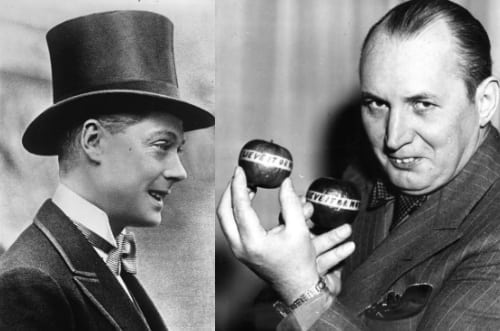
We Filipinos have been known for our hospitality, so much so that we were ranked 8th in the list of world’s friendliest countries in 2011 (HSBC’s Expat Explorer Survey).
Our ancestors were equally friendly to their guests: Filipinos from yesteryear were always thrilled whenever famous foreign personalities chose to have a brief stopover here.
Let’s take a look back at some of the most unforgettable historical icons you didn’t know once set foot on Philippine soil:
Also Read: 8 Famous Filipino Events You Didn’t Know Influenced The World
1. Ernest Hemingway.
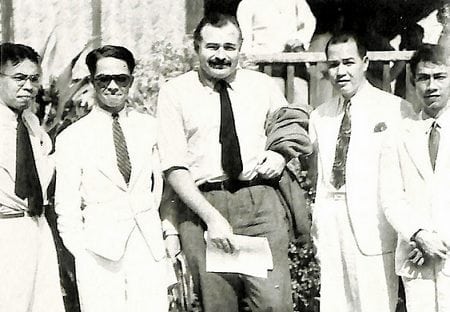
Who is he? Ernest Hemingway is considered one of the greatest American novelists of the 20th century. A correspondent who served both in WWI and WWII, Hemingway would later pen the 1951 Pulitzer Prize-winning novel The Old Man and the Sea. A few years after being conferred the Nobel Prize in Literature, Hemingway died by his own hand in 1961.
The Visit: In 1941, Hemingway was on a scheduled trip to China to attend his journalistic duties. He flew to Hong Kong via Pan Am Clipper from San Francisco, making an overnight stop in Guam and a longer stopover in Manila.
During their brief visit in the Philippines, Hemingway and his third wife Martha Gellhorn stayed at the Manila Hotel. The famed journalist was said to be impressed by the place that he would later declare “If the story’s any good, it’s like Manila Hotel.” It was also in this building where Hemingway met with some of the members of the Philippine Writers League led by Federico Mangahas (see photo above).
Related Article: 12 Random Facts About Manila That Will Blow Your Mind
However, Hemingway allegedly despised Manila and was basically drunk throughout his five-day visit. He was also reportedly irked by people who kept talking to him about For Whom the Bell Tolls (also his novel), so much so that he told his wife to go somewhere where no one reads books in English.
2. Anna May Wong.
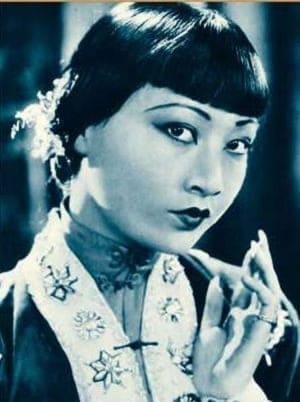
Who is she? Hollywood aficionados remember Anna May Wong as the first Chinese American movie star and also the first Asian American actress to dominate the international scene. Despite Hollywood being plagued by racism, Wong was able to stand out and star in dozens of films, the most famous of which was Shanghai Express opposite the legendary Marlene Dietrich.
The Visit: After losing a major movie role, the disappointed Anna May Wong headed to China for a year-long trip in 1936. Before going to their ancestral home in Taishan to visit her family, Wong briefly stayed in the Philippines to “escape the spring chill in Hong Kong, where she had caught the flu.”
READ: The Short And Tragic Life of The First Igorota Beauty Queen
In Manila, the actress reportedly dined with none other than President Manuel L. Quezon and the who’s who of the city’s elite, among them Nicasio Osmeña, son of a future Philippine president, and Conchita Sunico, who was crowned Miss Philippines in the 1935 Manila Carnival. After recovering from the flu, Wong returned to China for their family reunion.
3. Edward, Prince of Wales.
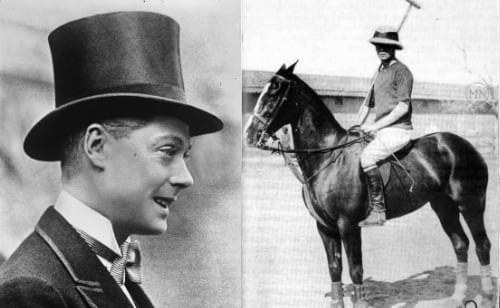
(Original caption) Edward, Prince of Wales, just before the game started on the memorable Saturday afternoon, when, because of a polo ball cutting his forehead, he was compelled to retire from the field (Manila Nostalgia/Lou Gopal).
Who is he? Edward was the Prince of Wales who, upon his father’s death in 1936, would rule the United Kingdom as King Edward VIII. His term was littered with controversies, culminating to his decision to give up the throne to marry the woman he loved–an American divorcée named Wallis Simpson. After his abdication, Edward became the Duke of Windsor.
Recommended Article: The 6 Most Tragic Love Stories in Philippine History
The Visit: From October 1921 to June 1922, Prince Edward visited several countries as part of his “Oriental Grand Tour.” The Philippines was included in his itinerary, the announcement of which sent everyone in Manila into a frenzy. After all, it was the first time that an heir to the British throne would visit the country.
The British royalty arrived in Manila on May 13, 1922, through the HMS Renown. As reported by The Times in London, “the batteries of Fort Santiago roared a Royal welcome and the guns of the Renown responded.”
A lunch in his honor was prepared at the Malacañang Palace where he was welcomed by Governor-General Wood and General Wright. His most memorable event in the capital city, however, was when he sustained a minor wound over his right eyebrow while playing polo at the Manila Polo Club.
4. Indira Gandhi.
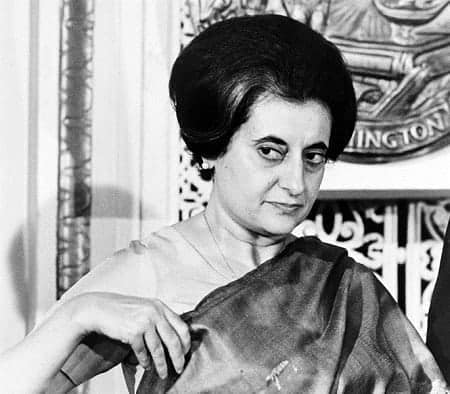
Who is she? Indira Gandhi was India’s third prime minister who served three consecutive terms. The daughter of India’s first prime minister Jawaharlal Nehru, she became known for her agricultural reforms and authoritarian policies. Indira’s clash with Sikh extremists ultimately led to her assassination by her Sikh bodyguards in 1984.
The Visit: In October 1981, Prime Minister Indira Gandhi made an official visit to the Philippines and Indonesia, both members of the ASEAN. She was welcomed in Manila by then-President Ferdinand Marcos, who prepared welcome remarks highlighting the diplomatic ties between their countries, and First Lady Imelda Marcos, who hosted a lunch in her honor.
READ: 10 Lesser-Known Photos from Martial Law Years That Will Blow You Away
When asked during a press conference whether India would join ASEAN when invited, Prime Minister Gandhi said: “Well, I do not think I can give an answer to that now. But I can say that our relationship with the individual countries of ASEAN has improved. And we want to improve it further.”
5. Robert Ripley.
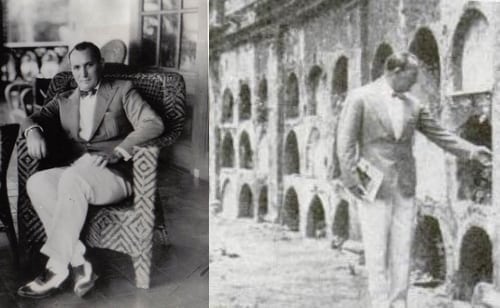
Who is he? Once dubbed as the “Modern Marco Polo,” Robert L. Ripley was the genius behind the legendary Ripley’s Believe It or Not! His fascination for all things odd and creepy brought him to 201 countries where he collected some of the most unusual artifacts the world could offer. A talented cartoonist, amateur anthropologist, and an explorer way ahead of his time, Ripley died of heart attack in 1949.
The Visit: Unknown to many, Ripley visited the Philippines twice: first was in the early 1930s, followed by a tour in Corregidor after WWII.
During his first visit, Ripley was photographed at the Malacañang Palace while being entertained by then Governor General Theodore Roosevelt Jr. He also visited the Paco cemetery which he described as one of the world’s most unique cemeteries because it “is built in the form of two huge concentric rings, in the walls of which are niches where the dead are interred…..most are now empty and open, indicating either poverty or forgetfulness on the part of the living relatives.”
READ: Unbelievable Cemetery in the Middle of a Street
He came back to Manila after WWII, this time for a guided tour in Corregidor Island–specifically the Malinta Tunnel–which was previously used as Gen. MacArthur’s headquarters. Witnessing firsthand the extent of damage done in Manila by the Japanese, Ripley shared his experience the very next day through his radio show.
6. Robert F. Kennedy.
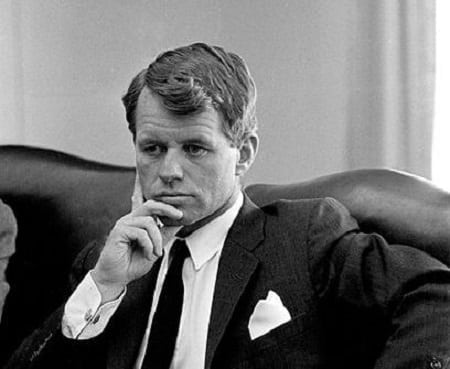
Who is he? Robert “Bobby” Kennedy is the younger brother of US President John F. Kennedy whose assassination in 1963 shocked the whole world. He was attorney general during JFK’s administration and later became a senator after his brother’s death. Nominated to run in the 1968 presidential elections, Senator Kennedy would have been a strong contender had his life not cut short (again, by assassination.)
Also Read: 6 People Who Killed Ninoy Aquino, According to Conspiracy Theorists
The Visit: In 1964, at the request of then President Johnson, Attorney General Robert Kennedy made a “peace-making trip” to Asia to help settle the dispute involving Indonesia, Malaysia, and the Philippines. A few days before his third meeting with Indonesia’s Sukarno, Kennedy went to the Philippines to meet with then-President Diosdado Macapagal.
Upon his arrival in Manila, however, the politician was lost in a “swell of adulation.” Accompanied by Ambassador William E. Stevenson, Kennedy would plant a tree in memory of his brother, receive an honorary degree, and visit a girls’ school where he was welcomed by “cheering, jumping girl students.” Such was his popularity that Stevenson remarked, “Why, this is better than bringing Elvis Presley here.”
7. Charles Lindbergh.
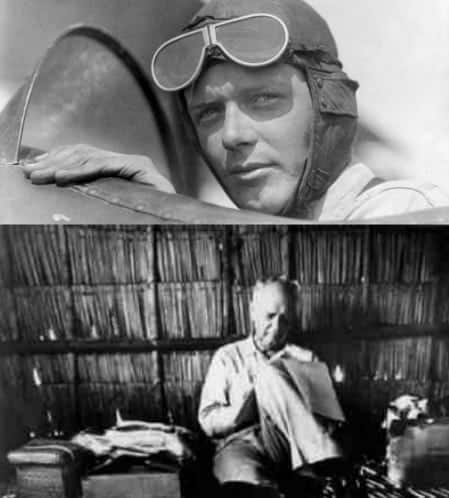
Who is he? Lindbergh became TIME’s first “Man of the Year” for making history as the first pilot to fly nonstop across the Atlantic Ocean in 1927. His feat would become the inspiration behind the 1937 fateful flight of Amelia Earhart, whom the press described as his female counterpart. A very private man, Lindbergh had been a recluse before reemerging in his later years as an advocate for environmental causes.
READ: 5 Awesome Philippine Heroes Who Are Not Filipinos
The Visit: Lindbergh, who once said “I would rather have birds than airplanes,” dedicated his last years to support various conservationist causes. In fact, he became instrumental in protecting Indonesia’s rhinoceros and Peru’s blue and humpback whales from extinction.
In 1969, after being told of the plight of the almost-extinct tamaraw and the Philippine eagle, Lindbergh visited the Philippines which he described as “one of the last frontiers of conservation.” Upon his arrival, Lindbergh worked with then-President Marcos and the country’s leading conservationist leaders in establishing a national sanctuary for the critically endangered animals.
Lindbergh also visited different aboriginal tribes in the country, including Palawan’s Batak people who even invited him to be a sponsor at a tribal wedding.
References
Biography.com,. Ernest Hemingway Biography. Retrieved 10 August 2015, from http://goo.gl/5Hrcpi
Buan, L. (2012). PHL world’s 8th friendliest country for expats, survey says. GMA News Online. Retrieved 10 August 2015, from http://goo.gl/5q3Lx7
Chan, A. (2007). Perpetually Cool: The Many Lives of Anna May Wong (1905-1961) (p. 123). Scarecrow Press.
Chicago Tribune,. (1964). Kennedy Asks Sukarno Halt Malaysia Row, p. 4. Retrieved from http://goo.gl/jBJTaf
Indira Gandhi Biography,. Biography.com. Retrieved 11 August 2015, from http://goo.gl/fsRR3V
Monteiro, G. (2010). “Just the Little Things”: Newly Discovered Sources for Hemingway’s 1941 Manila Stay. The Hemingway Review, 30(1), 165-167.
Nanda, P. (2003). Rediscovering Asia: Evolution of India’s Look-east Policy (p. 227). Lancer Publishers.
North, M. (1999). Reading 1922: A Return to the Scene of the Modern. Oxford University Press.
Ocampo, A. (2004). Royalty in Manila. Philippine Daily Inquirer, p. A15. Retrieved from https://goo.gl/S64cTs
Official Gazette of the Republic of the Philippines,. Welcome Remarks of President Marcos during the State Visit of Premier Indira Gandhi, October 8, 1981. Retrieved 11 August 2015, from http://goo.gl/oDmwrM
Ripley, R. (1936). The Incredible “Believe It or Not!”. Popular Mechanics Magazine, (2), 222. Retrieved from https://goo.gl/TmgR91
Ripleys.com,. The Iconic Mr. Ripley. Retrieved 11 August 2015, from http://goo.gl/xCvFvR
Thimmesch, N., & Johnson, W. (1965). Robert Kennedy at 40 (p. 144). W.W. Norton.
Thompson, N. (2013). A Curious Man: The Strange and Brilliant Life of Robert “Believe It or Not!” Ripley (pp. 329-330). Crown/Archetype.
TIME,. Person of the Year: A Photo History. Retrieved 16 August 2015, from http://goo.gl/d15Vur
Whitman, A. (1969). Lindbergh Traveling Widely as Conservationist. The New York Times. Retrieved from https://goo.gl/VJPWY9
FilipiKnow
FilipiKnow strives to ensure each article published on this website is as accurate and reliable as possible. We invite you, our reader, to take part in our mission to provide free, high-quality information for every Juan. If you think this article needs improvement, or if you have suggestions on how we can better achieve our goals, let us know by sending a message to admin at filipiknow dot net
Copyright Notice
All materials contained on this site are protected by the Republic of the Philippines copyright law and may not be reproduced, distributed, transmitted, displayed, published, or broadcast without the prior written permission of filipiknow.net or in the case of third party materials, the owner of that content. You may not alter or remove any trademark, copyright, or other notice from copies of the content. Be warned that we have already reported and helped terminate several websites and YouTube channels for blatantly stealing our content. If you wish to use filipiknow.net content for commercial purposes, such as for content syndication, etc., please contact us at legal(at)filipiknow(dot)net